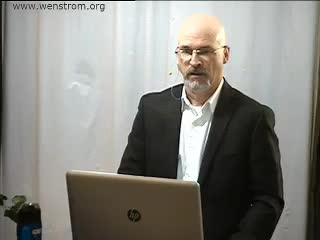The Rapture of the Church: The Distinctions Between the Rapture and the Second Advent of Jesus Christ Lesson # 10

The Rapture of the Church • Sermon • Submitted • 1:23:50
0 ratings
· 25 viewsThe Rapture of the Church: The Distinctions Between the Rapture and the Second Advent of Jesus Christ
Files
Notes
Transcript
Sermon Tone Analysis
A
D
F
J
S
Emotion
A
C
T
Language
O
C
E
A
E
Social
It is important to understand that the Bible teaches that there are distinctions between the rapture and the Second Advent of Christ.
Those who don’t believe in a “pre-tribulation” rapture of the church also fail to see the distinctions between the Second Advent of Christ and the rapture and thus attribute passages dealing with the latter to the former.
For example, the “rapture” precedes the Tribulation whereas the “Second Advent” follows it as indicated by the chronology presented in the book of Revelation.
The “rapture” delivers the church from the Tribulation (1 Thessalonians 1:10; 5:9) while the “Second Advent” delivers Israel from Satan, Antichrist and the Tribulational armies.
Jesus Christ will not judge the inhabitants of the earth at the “rapture” while He will do so at His “Second Advent” (Dan. 12:1-2; Matt. 25:21-36; Ezek. 20:37-38).
The “rapture” is a time of joy (Titus 2:13) whereas the “Second Advent” will be a time of mourning (Zech. 12:10-14; Rev. 1:7).
The “rapture” takes place before the day of wrath or day of the Lord (1 Thess. 5:1-11; Rev. 3:10).
However, the “Second Advent” ends the day of the Lord (Matt. 24:29-36).
The “rapture” is seen only by the church and is therefore invisible to the world while the “Second Advent” is the visible manifestation of Christ on the earth (Revelation 1:7).
The Lord meets the church in the earth’s atmosphere at the “rapture,” (1 Thessalonians 4:13-17) whereas the Lord physically lands on the Mount of Olives in Jerusalem at His “Second Advent” (Zechariah 14:4).
When the “rapture” takes place, believers are taken to the Father’s house by the Lord Jesus Christ (John 14:1-3) while during the “Second Advent” resurrected saints do not see the Father’s house.
The Lord claims His Bride at the “rapture” and takes her to heaven (1 Thess. 4:13-17; John 14:1-3).
However, He returns with her at the “Second Advent” (1 Thessalonians 3:13; 2 Thessalonians 1:10; Rev. 19:1-20:6).
The “rapture” results in the resurrection of the church (1 Thess. 4:13-18) while the “Second Advent” results in judgment of the inhabitants of planet earth (Ezek. 20:33-38; Matt. 25:31-46).
Signs do not precede the “rapture” whereas visible signs precede the “Second Advent” (Matthew 24; Mark 13; Luke 21:10-31).
The “rapture” completes God’s program for the church (1 Corinthians 15:51-58) while the “Second Advent” is related to God’s program for Israel (Matthew 24).
The “rapture” is a mystery (1 Corinthians 15:51-57), not known to Old Testament saints whereas the “Second Advent” is prophesied throughout the Old Testament canon.
The “rapture” is imminent (1 Thess. 5:1-2; James 5:7-9; Rom. 13:11-12) while on the other hand the “Second Advent” cannot take place until seven years after the start of the seventieth week when Antichrist establishes a treaty with Israel (Dan. 9:27).
The “rapture” leaves creation unchanged whereas the “Second Advent” entails a change in creation from corruption to perfect environment (Romans 8:18-22).
The “rapture” does not fulfill God’s covenants to Israel whereas the “Second Advent” marks the beginning of their fulfillment through Christ’s millennial reign.
At the “rapture” there is no mention of Satan.
However, at the “Second Advent” Satan will be imprisoned for a thousand years (Rev. 19:20-20:3).
The church is nowhere found during the events of the Tribulation period recorded in Revelation 6-18 but appears as Christ’s bride in heaven in Revelation 19:1-10 and comes back with Christ at His Second Advent as recorded in Revelation 19:11-21.